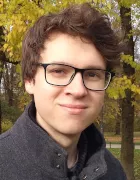Active Learning of Graph Neural Network Potentials from Quantum and Experimental Data
AL-Q&E
Abstract
As molecular dynamics (MD) builds the foundation to design new materials with desired properties to be used in, e.g., smart nanodevices, it has become a cornerstone of many high-impact disciplines. By combining MD with graph neural network (GNN) approaches promising results could be obtained in computing material properties at unprecedented accuracy. However, training such GNNs typically relies on density functional theory (DFT) data which is computationally expensive to obtain. This project aims to overcome this computational burden by simultaneously exploiting DFT and experimental data during training – combined with an active learning (AL) scheme which only performs simulations on demand. As DFT is often limited to small system sizes, while experimental data usually capture large size effects, the combination of both methods promises to cover a wider range of system sizes and to correct DFT inaccuracies where experimental data is available. Hence, for the first time, we can learn GNN potentials that are transferable to different temperatures and pressures and agree with available experimental data. The extension of this project aims to improve our developed single-shot uncertainty quantification (UQ) networks and apply these in the AL setting on experimental data.





